 That stained old sofa, as you disparagingly refer to it, is an authentic Hollywood casting couch. 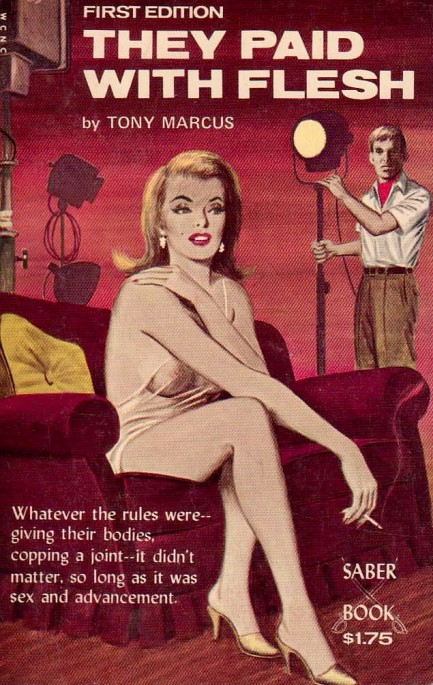
As always, the mole on the female figure's cheek serves as the signature of artist Bill Edwards. Here he handles the cover work on They Paid with Flesh by Tony Marcus. This tale is, shall we say, Weinsteinian in nature, as a middle aged producer beds aspiring actresses, while a young studio fixer tries to locate a missing starlet. Their paths intersect when the producer beds the fixer's ex, who he still may have feelings for. That's a perfectly workable set-up for a story, but instead the increasingly convoluted plot first veers off into a scheme to steal four million dollars from a deposed dictator who's planning a counterrevolution, and later focuses on the starlet's plan to change her identity through cosmetic surgery, though the doctor she's chosen is a serial killer. Did we say convoluted? We meant labyrinthine. But ultimately They Paid with Flesh is sleaze, so the plot pivots are mere lead-ins for explicit sex, in all its typical variations, and a couple that aren't typical—or even legal. We'd like the time we spent on this returned to us, but we'd also like a chalet on three acres in the hills above Nice, and we aren't getting that either.
 A constant clicking noise? I don't hear anything. Anyway, state your full legal name then let's get into some compromising positions. 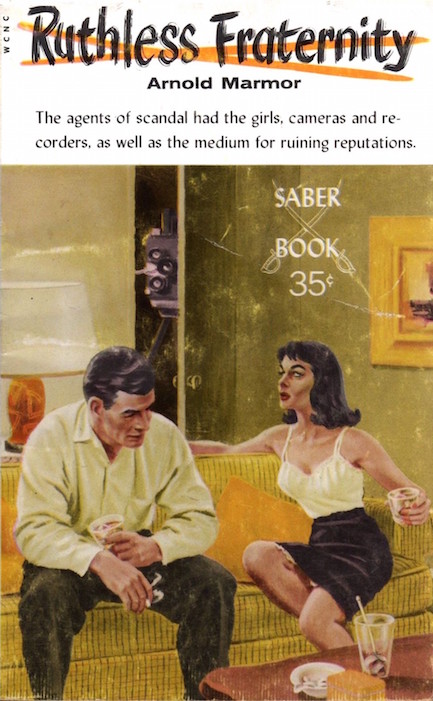
The cover for Arnold Marmor's Ruthless Fraternity features possibly the least hidden camera in paperback history, but you have to love the art anyway. We've seen several blackmail covers, and they're tricky in that the artists are constrained by having to show both the camera and the intended victim of the set-up. It always turns out ridiculous in terms of believability, but they're always fun covers. The fraternity of the title is not literal. It refers to the proverbial journalistic boys club, and the story deals with the ins and outs, double-dealing, and machinations of a scandal magazine called Tell. We've featured Arnold Marmor books twice before, but had no idea how prolific the guy was. He wrote such sleazers as Bed Bait, Lust Lodge, and Boudoir Treachery, but also dabbled in spy novels and short stories. We'll probably run into him at a later date. This effort was 1960 and the art is by Bill Edwards.
 What the hell are you doing? Casual Friday starts next week. 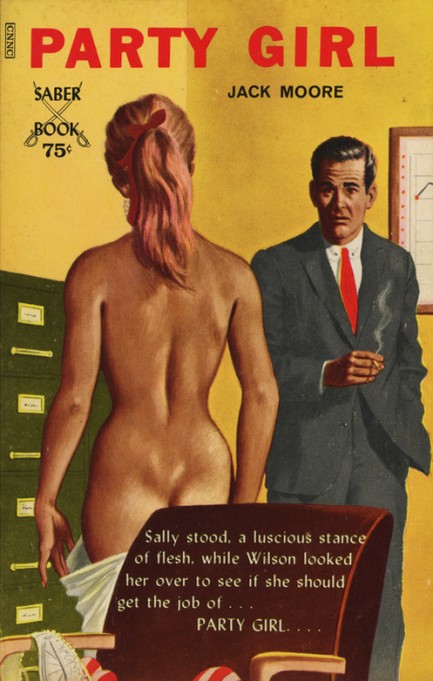
It's another humorous Bill Edwards cover for Saber Books, this time fronting Jack Moore's 1965 sleazer Party Girl. Wanna know what it's about? No need to be coy. We read them so you don't have to. Twenty year-old Sally Logan applies for an executive secretary position and is immediately made into a sex object, starting from the interview when the company president quizzes her about her bedroom habits, and the personnel manager makes her strip so he can check out her body. It's ridiculous, of course, especially in 2017's cultural landscape, but this being sleaze Sally is willing to do anything—just anything—to please her boss. And after all, the reason she decided to seek work in the first place was to meet a man. Mission accomplished. And accomplished again. And again. A good book? Of course not, but at least everyone gets a happy ending. And as a side note, we'd be remiss if we didn't thank Bill Edwards for being so good to us over years—his are by far the easiest covers to caption. Check here, here, here, and here to see what we mean.
 Cuban program to clone Fidel Castro goes horribly wrong. Multiple Castros result—but all are rampaging capitalists. 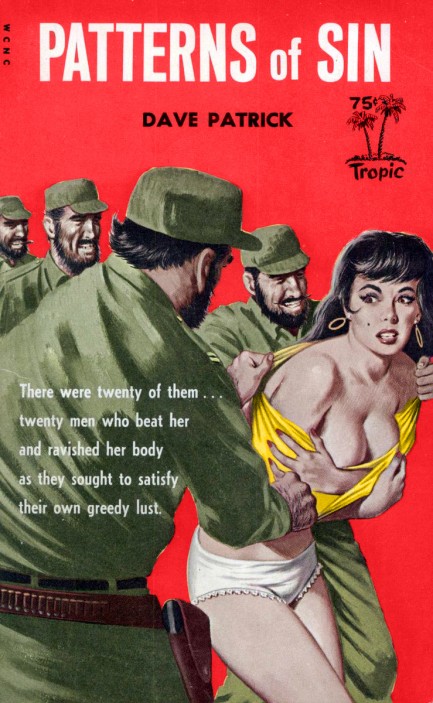
The lead character in Dave Patrick's 1965 novel Patterns of Sin is a college professor and ex-CIA operative named Thomas Keith who happens to be a millionaire. Only in sleaze fiction, right? When his latest girlfriend is almost kidnapped by rogue Cubans, he suspects there's more to her than meets the eye, and there is—she fled to the U.S. after some particularly sticky island dealings involving a long lost twin brother/incestuous lover who was a famed counter-revolutionary. Sadly, there are no clones, but who needs 'em? The incest angle is weird enough: “Tom had so reminded her of her brother that she'd almost called him by her brother's name as they made love.” She actually tells Thomas about her brother, and he's fine with it.
“Are you sure, Tom?” she whispered.
“Do the other women I've had bother you?”
“No, but men are supposed to be different. They're supposed to want virgins.”
“Every girl's a virgin to me, until I've made love to her.”
The government is interested in Tom's girlfriend and her Cuban connection, so he's brought back into the CIA, given a hot partner and—this being a sleaze novel—the partner is a woman with whom he has a steamy history. But they don't get together—the partner is gay now, prefers the Cuban girlfriend, and gets her. Thomas's reaction? “It's a waste of a beautiful woman as far as I'm concerned, but it's your life.” You may be wondering if there's any actual plot here. Not enough to matter. The anti-commie aspect is a mere placeholder between love scenes. The book was bad. We knew it would be bad. But we had to find out what it was about. It wasn't about clones the way the cover art might make you think, but maybe it should have been. That art, by the way, is by Bill Edwards—the mole on his female figures always gives it away.
 Oh, that's hot, baby. Take your bra off real slow. Just like that. Now tell me you're gonna shank me in the shower. 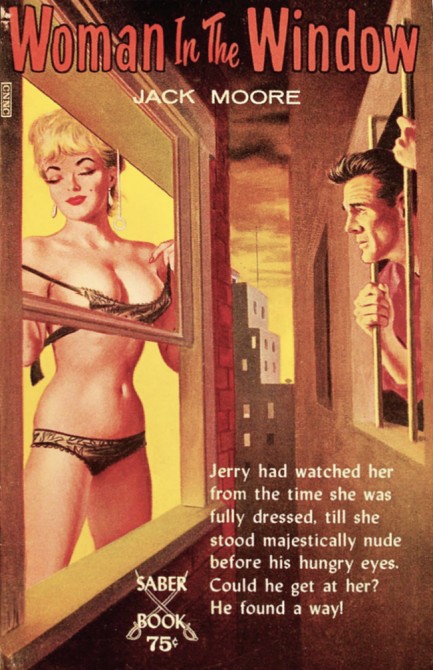
Last week we shared a collection of Bill Edwards paperback covers, but this piece of his needed to stand alone, if for no other reason than its absurdity. A prison built within feet of an apartment building? A scantily clad woman encouraging a convict to seek an early release—right in her window if his aim is good enough? This one is sublime. 1965 copyright.
 Bill Edwards paperback art gains new recognition. 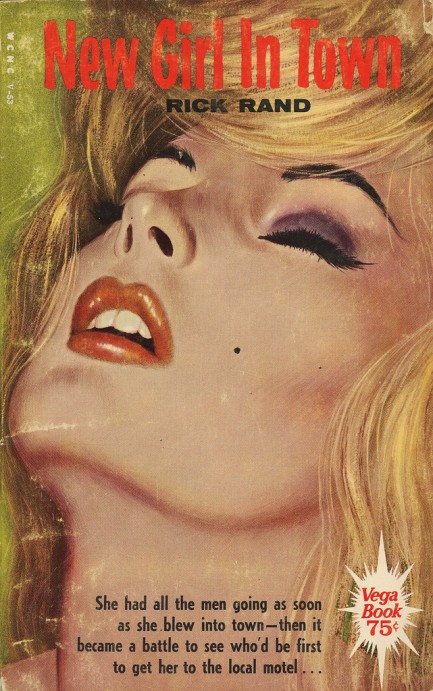
Bill Edwards' profile as a paperback illustrator has risen considerably in recent years. Like others who painted for sleaze imprints, it is not so much his technical ability that has garnered the attention, but rather the subject matter and a strong style. Edwards is a guy whose work you can identify in a millisecond. His women almost always have sharp cheekbones, ski jump noses, and a prominent beauty mark. The cover above for Rick Rand's New Girl in Town shows you all three elements up close. Edwards was also prolific like few other painters, which makes finding his work easy. Below are many more illustrations, some for novels with subject matter well beyond the pale, and we have other Edwards pieces populating Pulp Intl., for example here, here, and here.
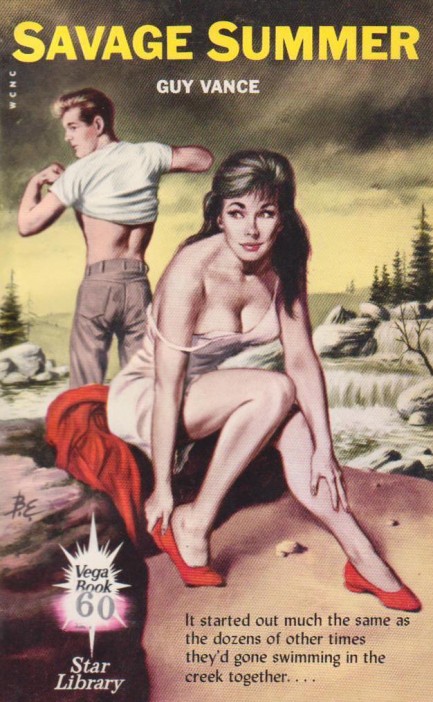 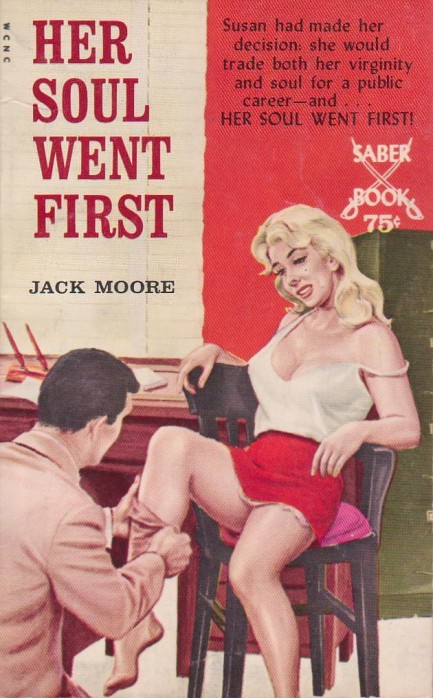 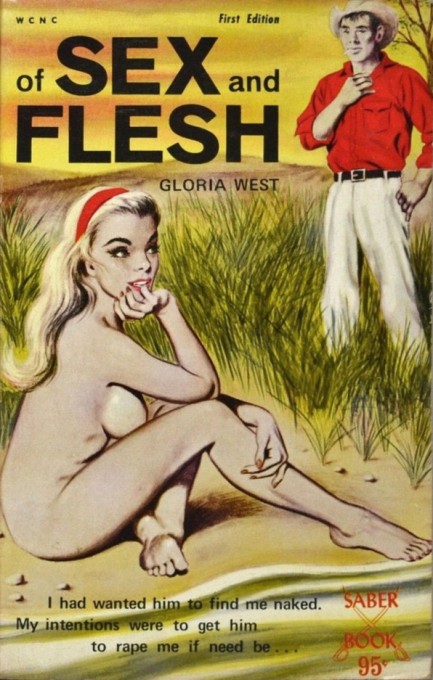 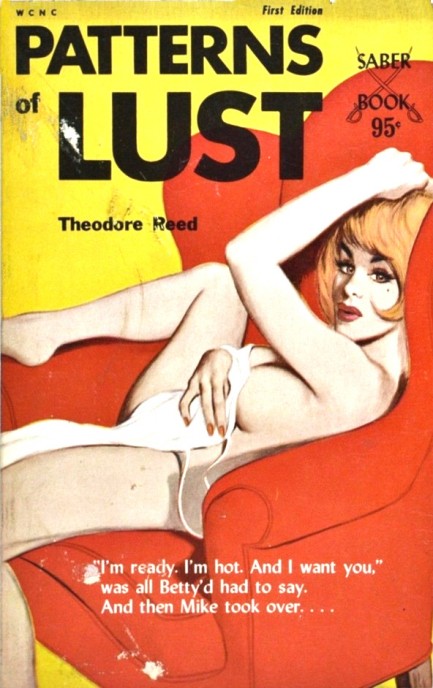   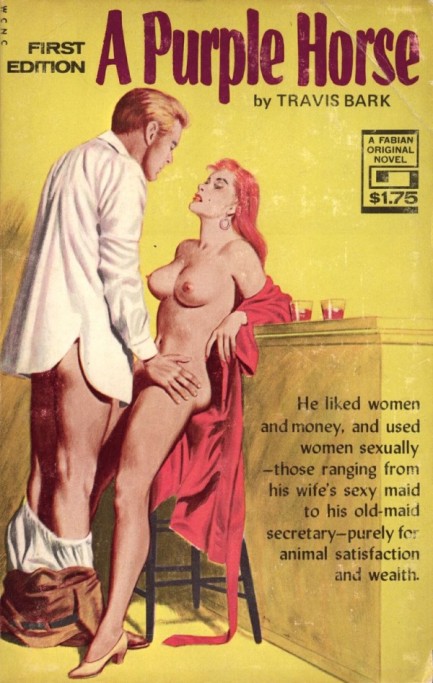 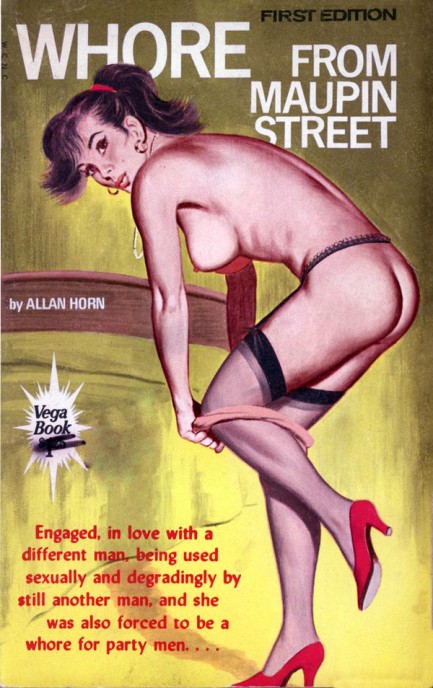 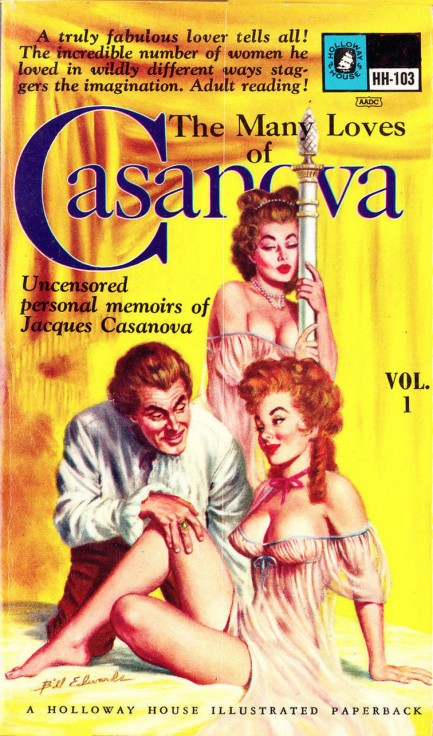 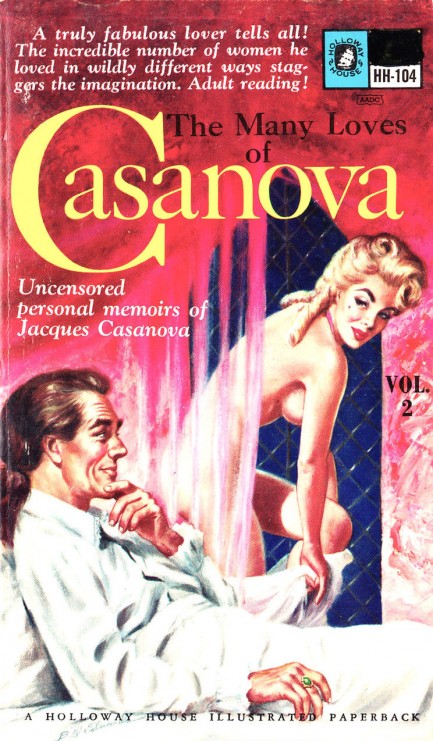 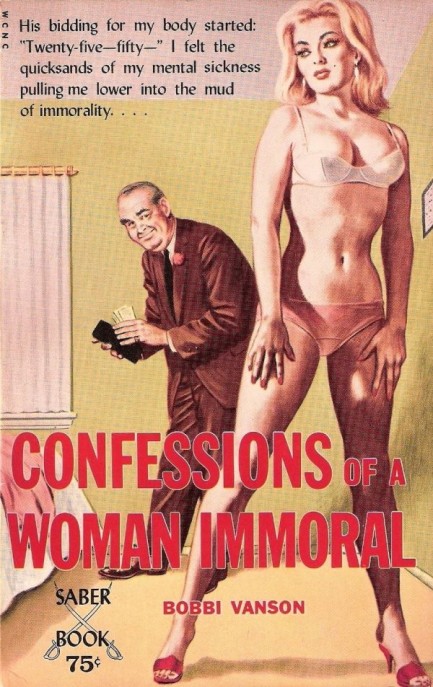 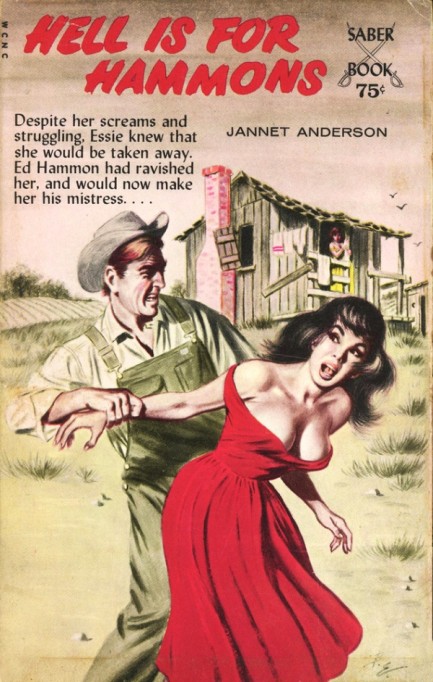 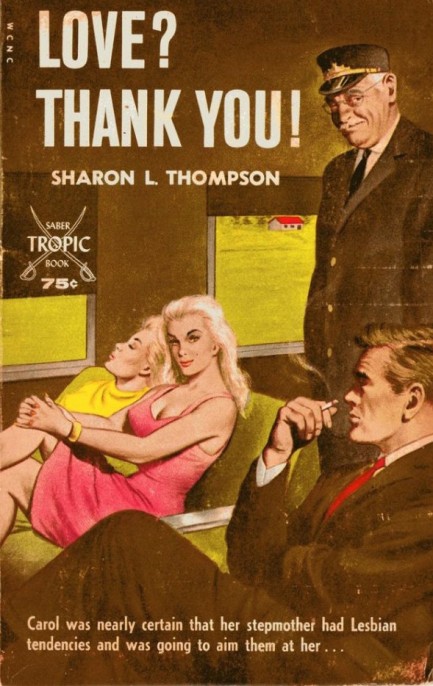 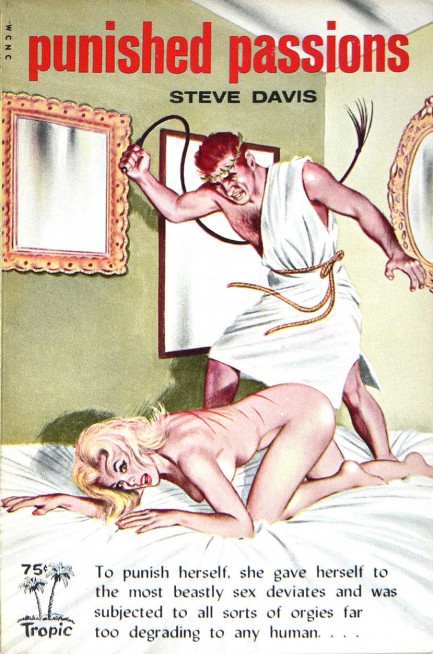 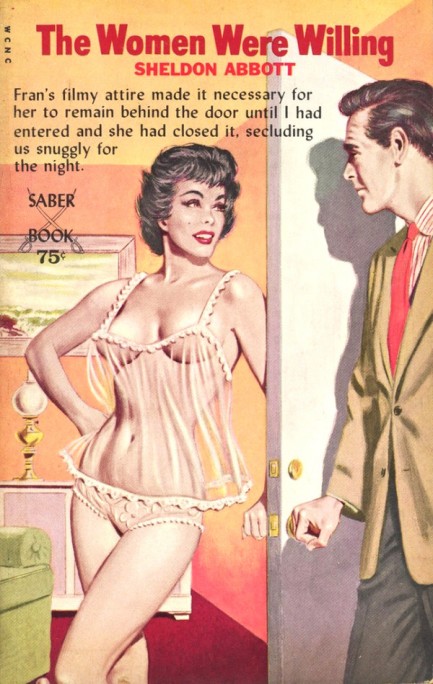 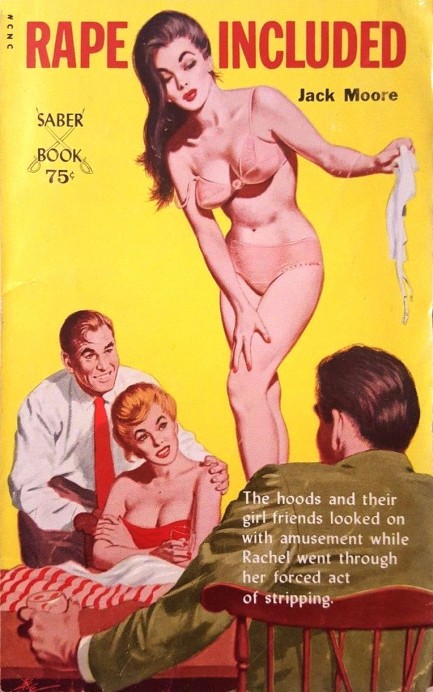 
 Mid-century paperbacks and the many sides of erotic dance. 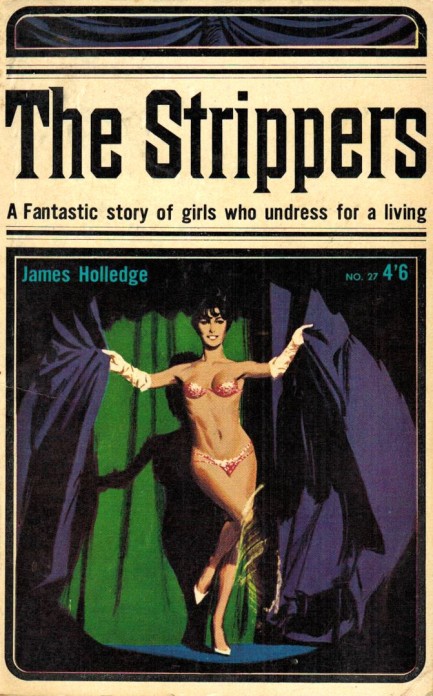
We've seen more paperback covers featuring dancers than we can count. No surprise—they are after all an essential element of crime fiction, and many of the covers depicting them are excellent. But as you might imagine, novels that feature strippers, showgirls, and burlesque dancers as characters also fall into the sleaze genre quite often, which in turn makes for a lot of low budget cover work. So we have the full range for you today in a collection depicting the kinetic art of stage dancing, with illustrations from Bernard Safran, Robert Maguire, Robert McGinnis, Gene Bilbrew, Doug Weaver, and others, as well as numerous unknowns. Enjoy.
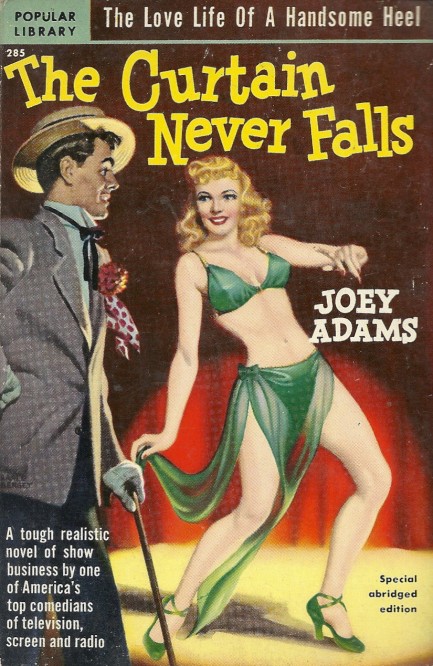  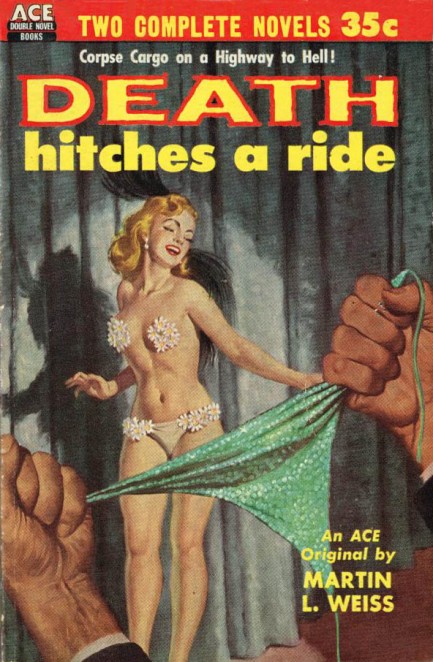 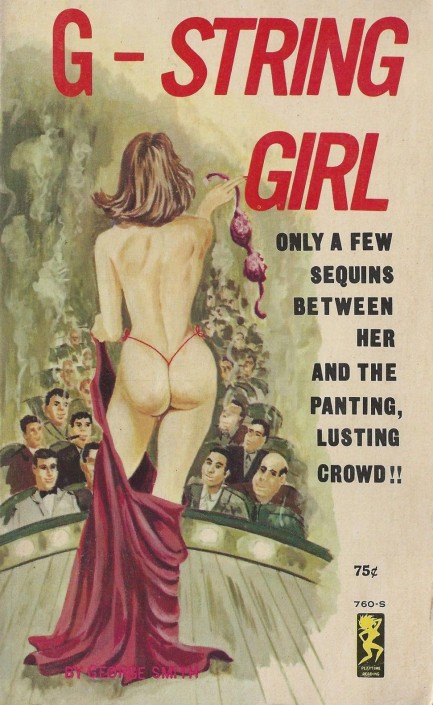 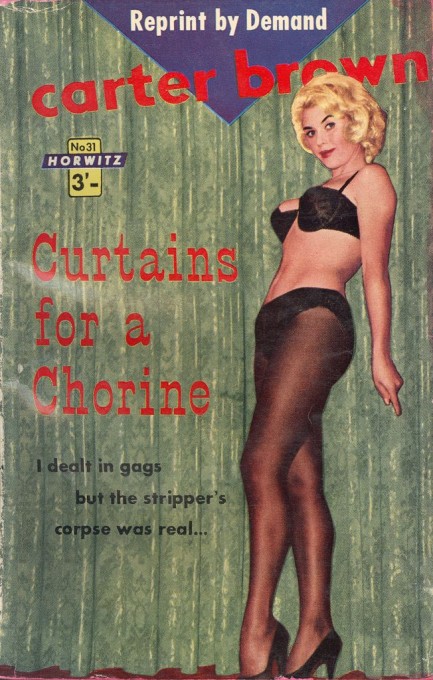 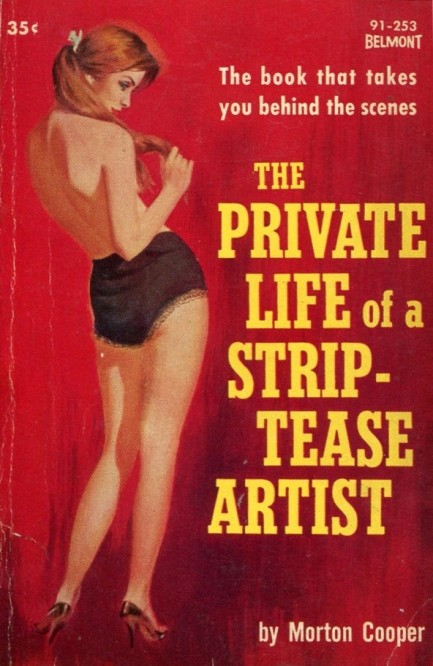 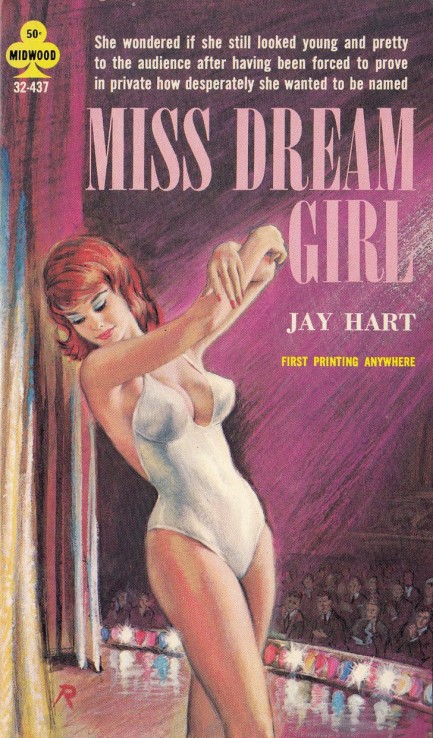 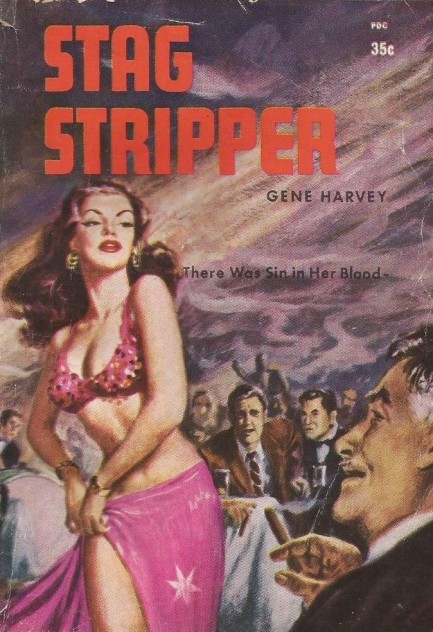 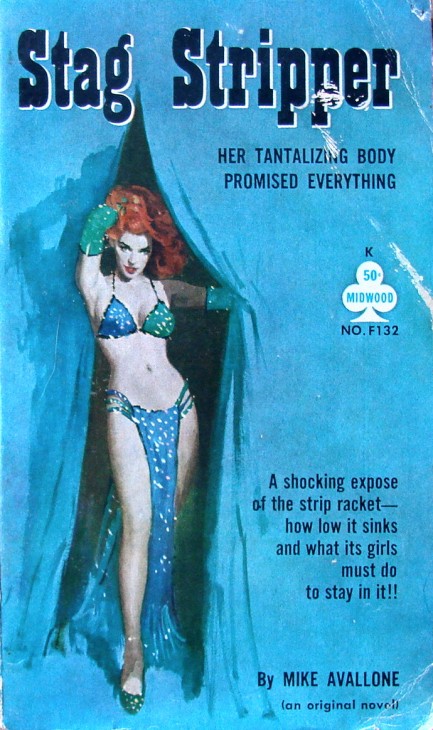 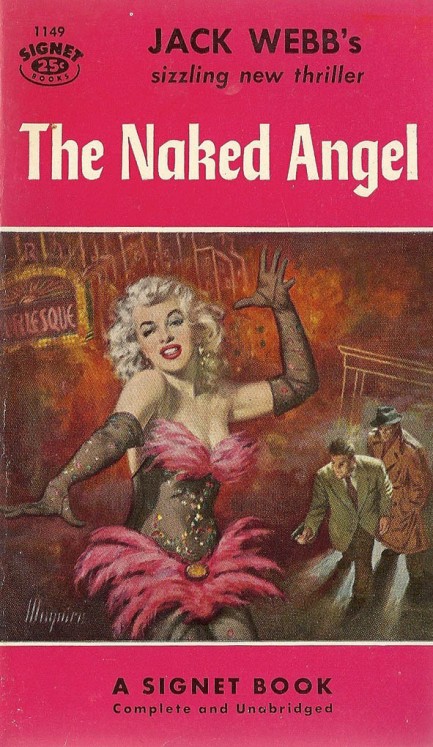 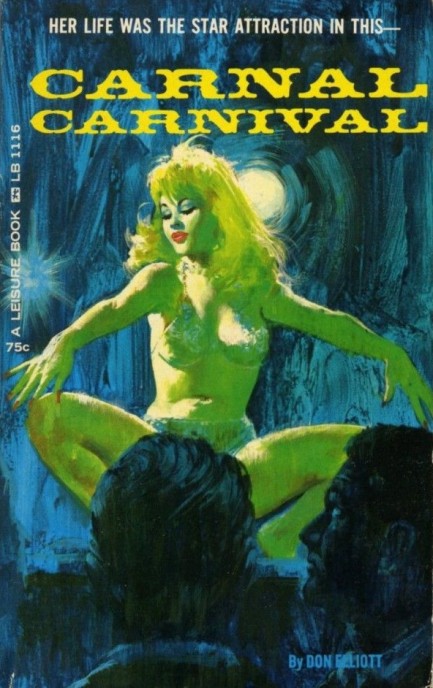  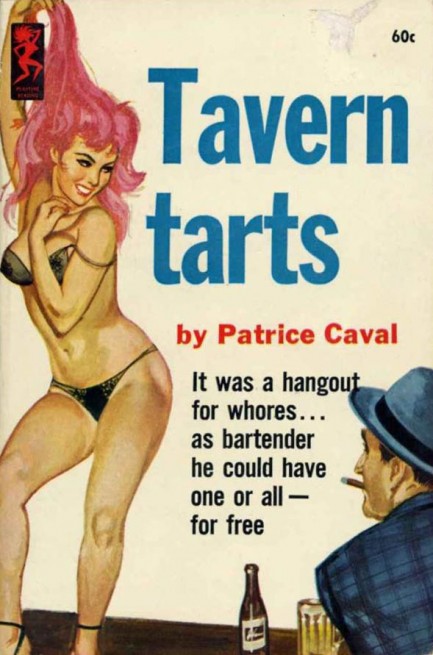 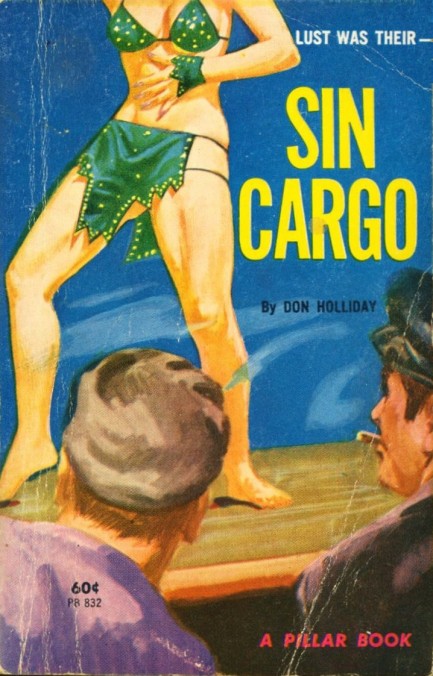 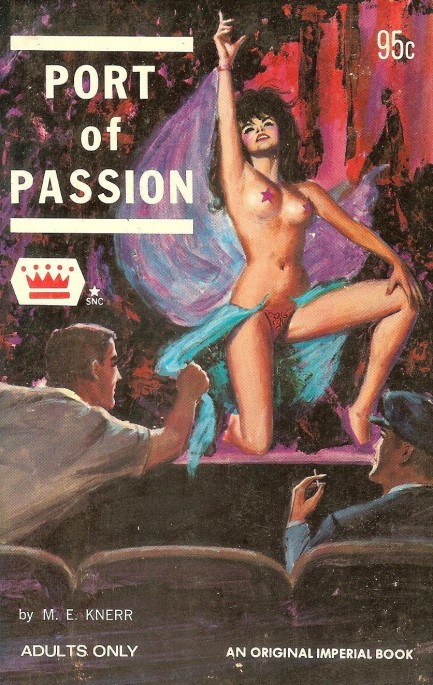 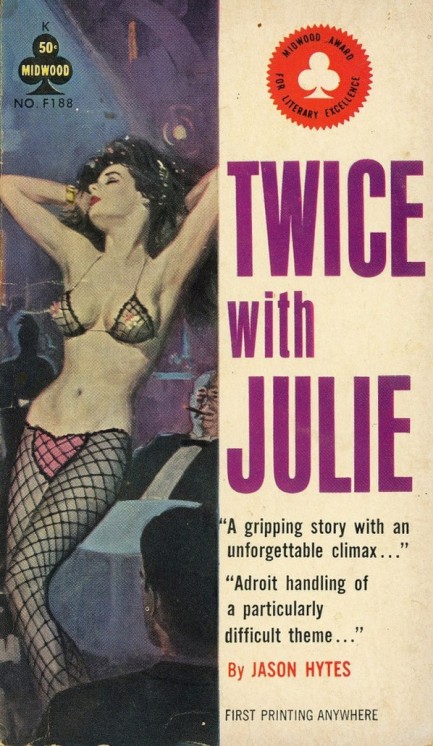 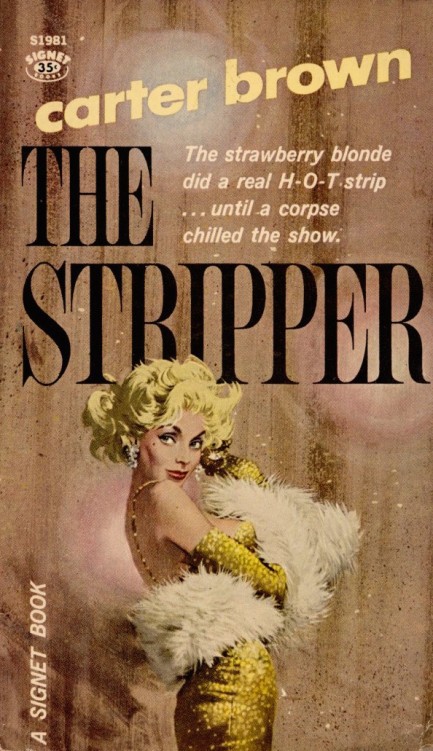 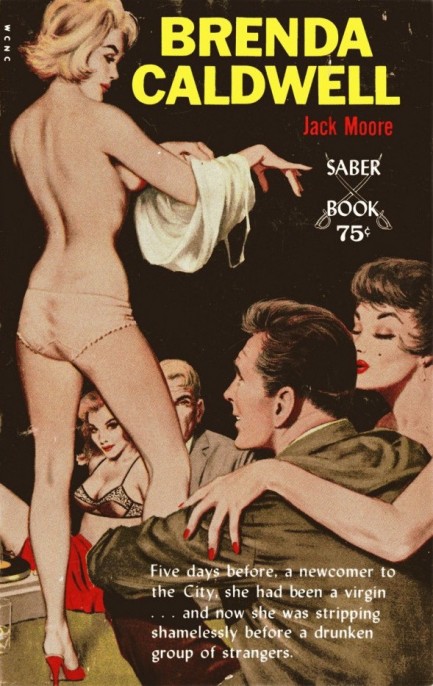 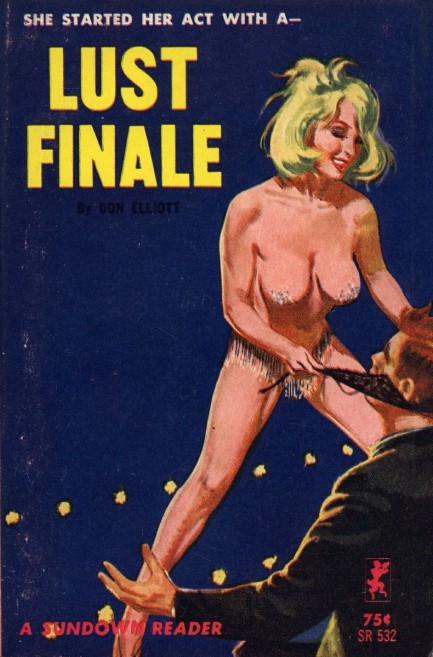 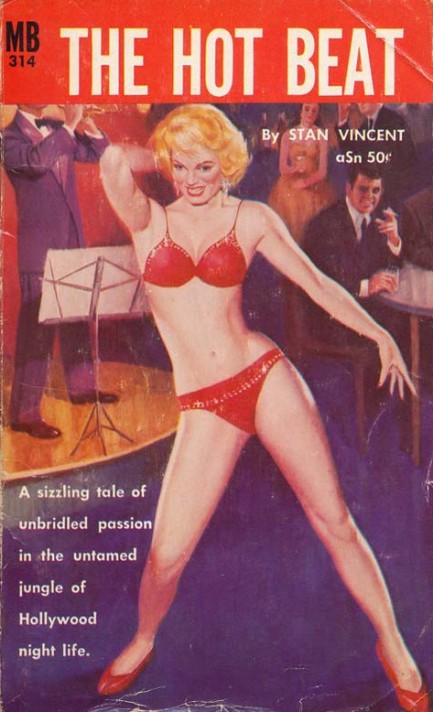 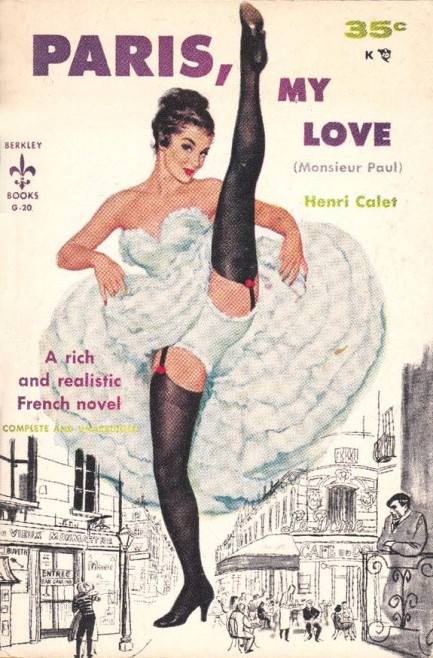 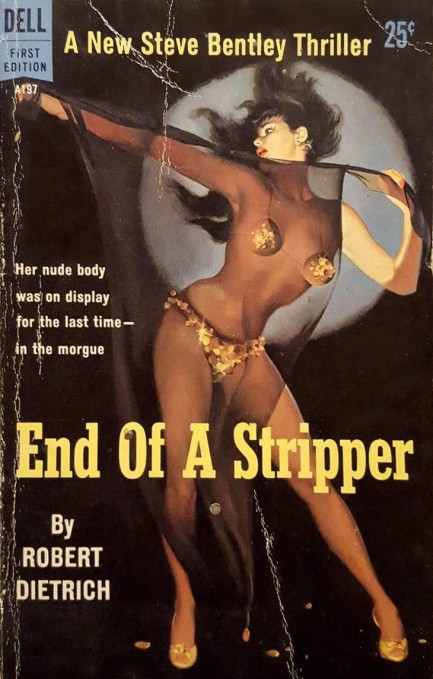 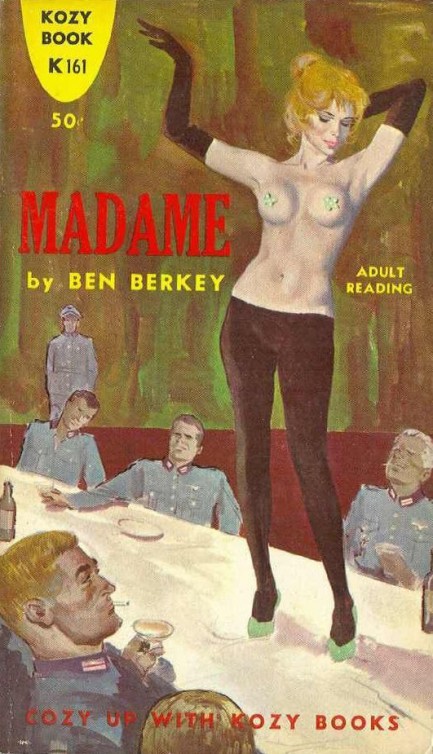 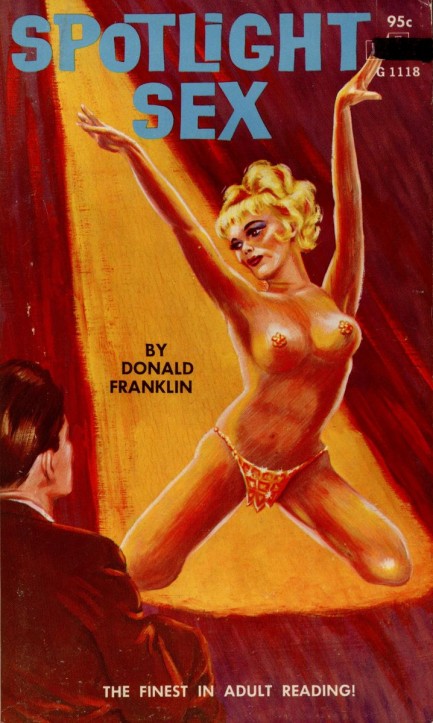 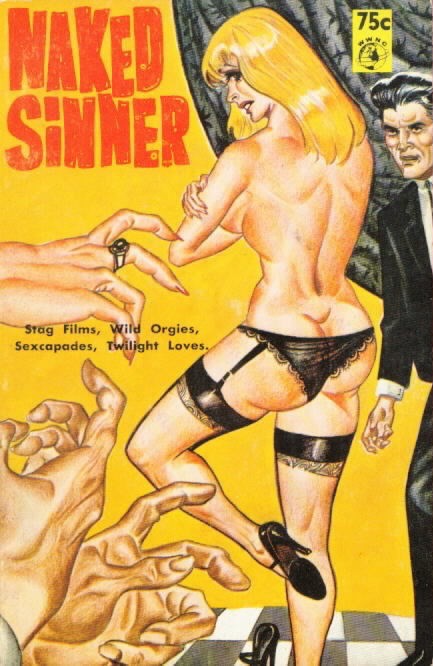 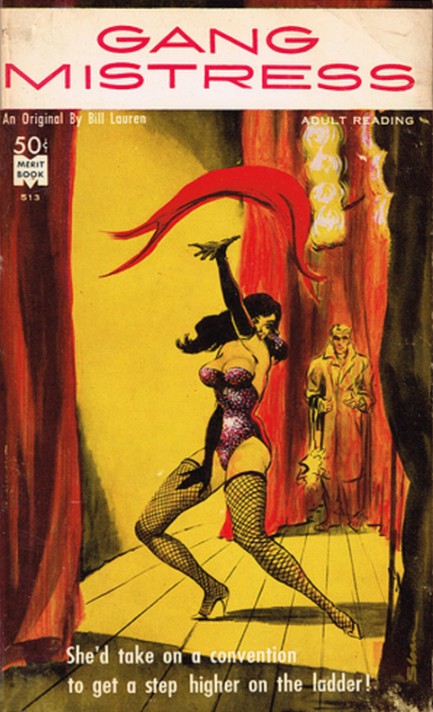 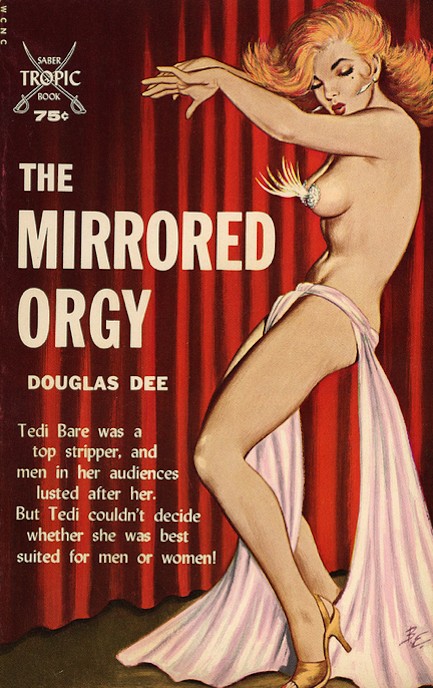 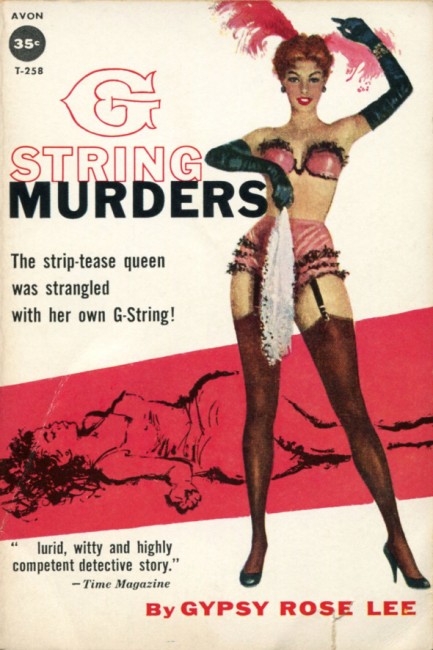 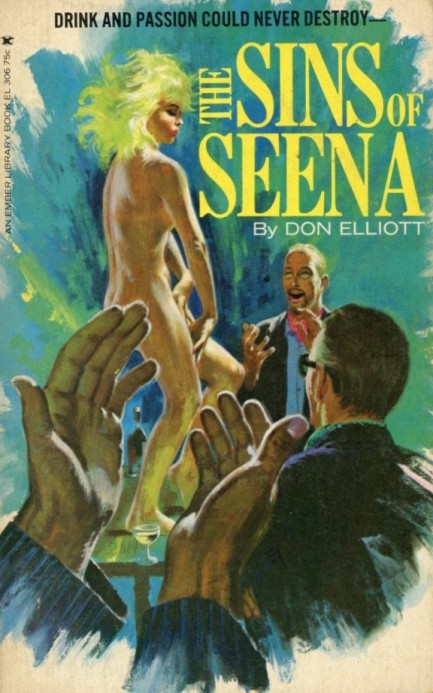 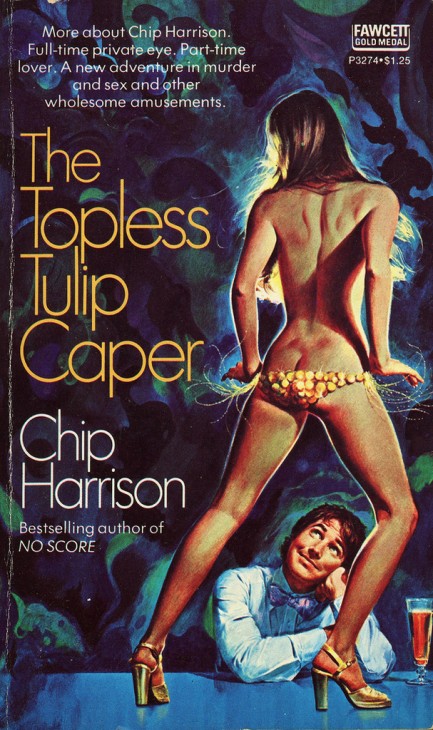 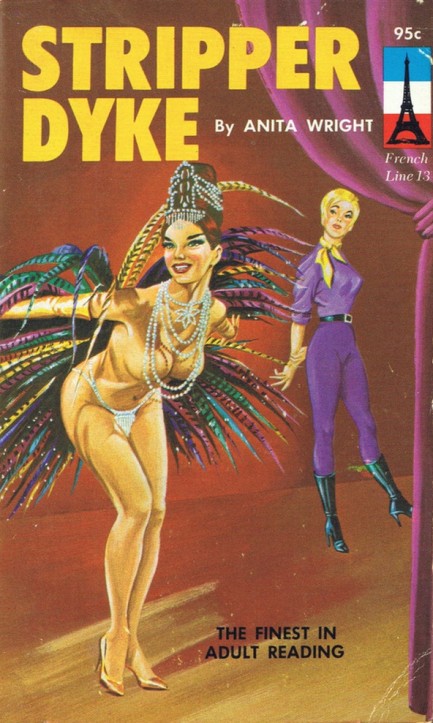 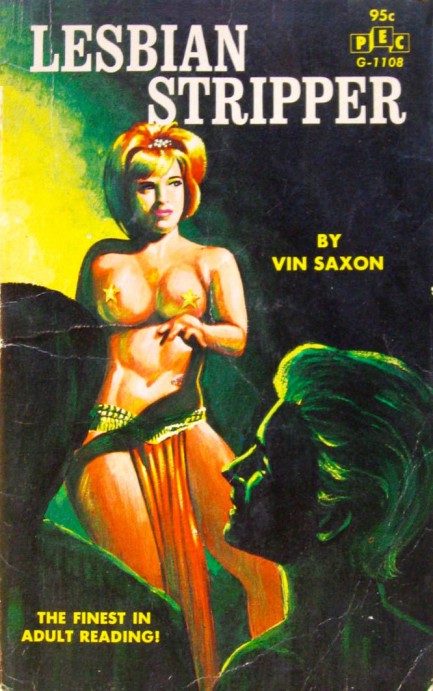 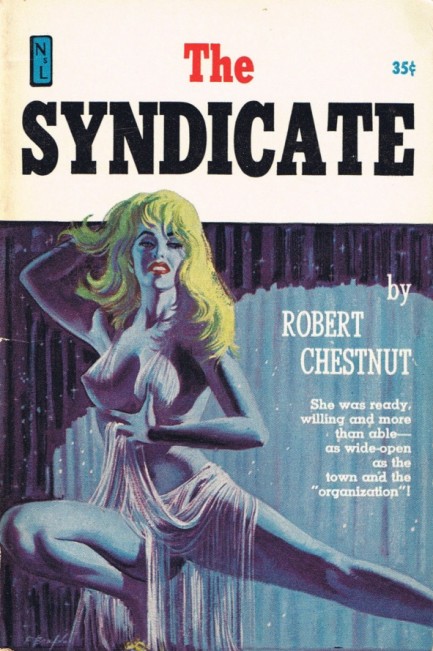 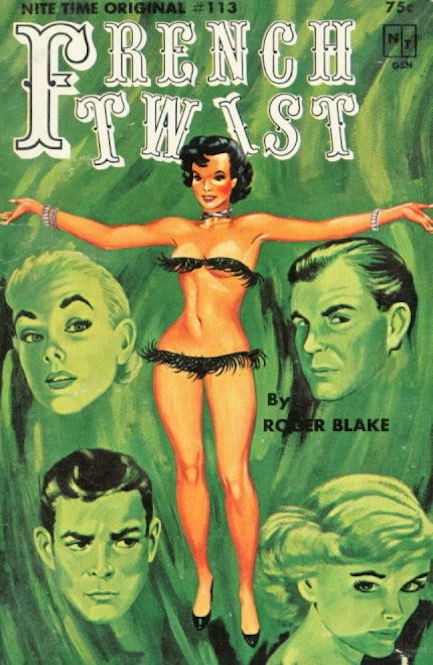   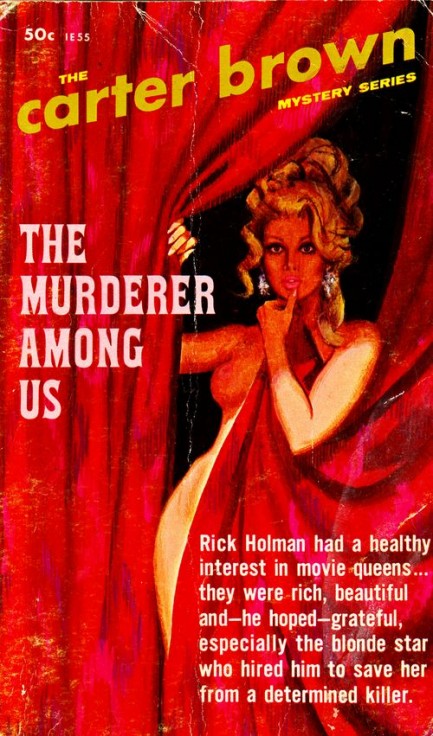 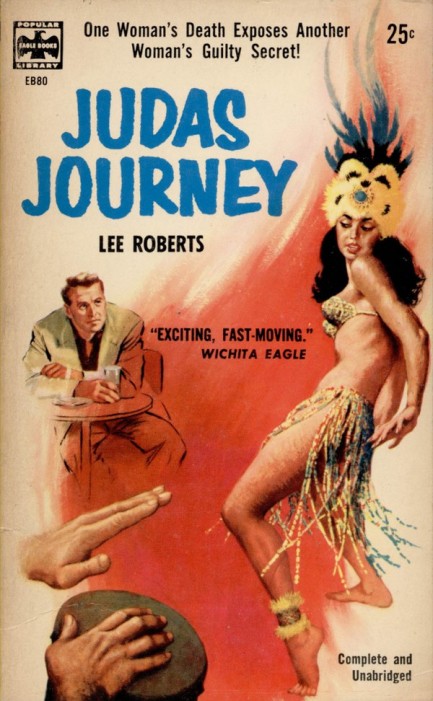 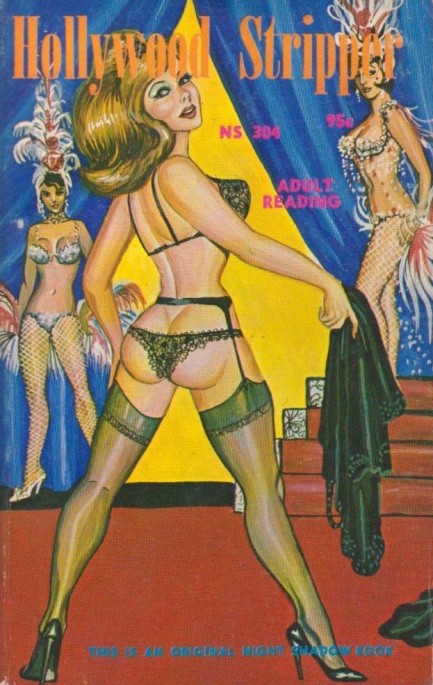 
 You're hired. Now let's have you fill out an application so everything's official. 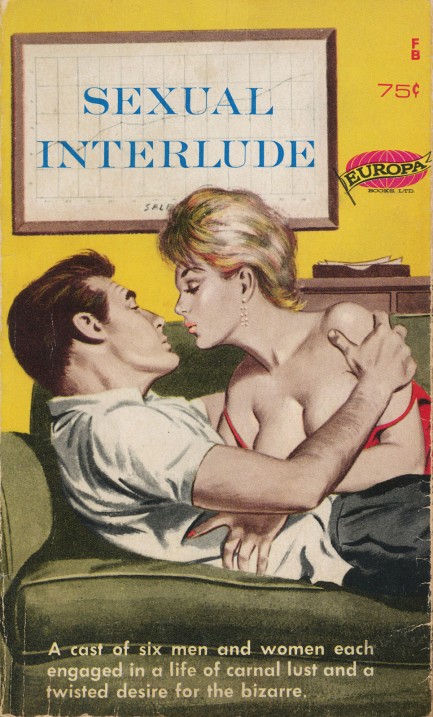 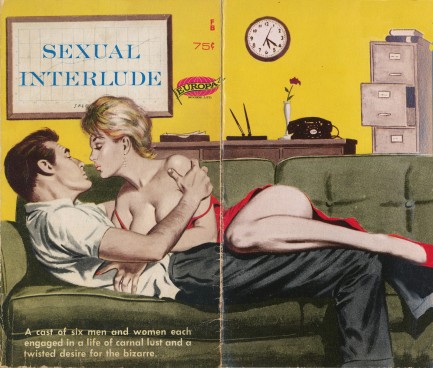
Here's a beautiful art piece we saw on an auction site a while back, 1963's Sexual Interlude from Europa Books, Ltd., which was a U.S. publisher that specialized in sleaze novels with fold-out covers. The illustrator isn't credited, but we know Bill Edwards painted some Europa fronts and in fact this looks very much like his work—so much so that we're going to say it's him and await confirmation or correction. The author likewise isn't noted on the cover but the book was written by Fred Dessiers, who doesn't appear anywhere else in the literary record that we can find. Europa fold-outs are rare because the company was short-lived, but this discovery shows that their novels are worth seeking, at least for the art.
 These between-the-legs shots are safer with you than with my previous partner. He was something, lemme tell you. 
Above, the cover of Stella Gray's lez sleaze classic The Naked Archer, for Vega Books, 1966. We haven't read this one—it sells for way too much money. But the cover blurb gives the gist, and typically, because the readers were mostly male, lesbians in these books didn't stay lesbian for long, so we're pretty sure we know how this one goes. The art is by the underrated Bill Edwards.
 The court announces a sixty-minute recess so it can have—er, I mean speak—with the defendant in its chambers. 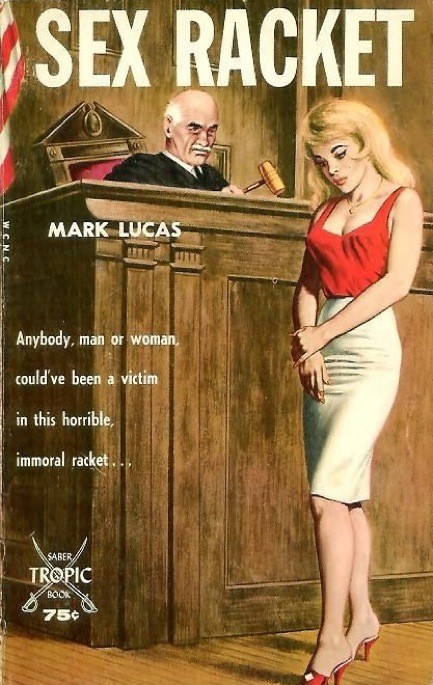
Sleaze from 1966, Sex Racket, from Saber, written by Mark Lucas. You wouldn’t think so, but he wrote other books. The mole on the defendant’s cheek gives this cover away as Bill Edwards art.
|
 |

The headlines that mattered yesteryear.
1933—The Gestapo Is Formed
The Geheime Staatspolizei, aka Gestapo, the official secret police force of Nazi Germany, is established. It begins under the administration of SS leader Heinrich Himmler in his position as Chief of German Police, but by 1939 is administered by the Reichssicherheitshauptamt, or Reich Main Security Office, and is a feared entity in every corner of Germany and beyond. 1937—Guernica Is Bombed
In Spain during the Spanish Civil War, the Basque town of Guernica is bombed by the German Luftwaffe, resulting in widespread destruction and casualties. The Basque government reports 1,654 people killed, while later research suggests far fewer deaths, but regardless, Guernica is viewed as an example of terror bombing and other countries learn that Nazi Germany is committed to that tactic. The bombing also becomes inspiration for Pablo Picasso, resulting in a protest painting that is not only his most famous work, but one the most important pieces of art ever produced. 1939—Batman Debuts
In Detective Comics #27, DC Comics publishes its second major superhero, Batman, who becomes one of the most popular comic book characters of all time, and then a popular camp television series starring Adam West, and lastly a multi-million dollar movie franchise starring Michael Keaton, then George Clooney, and finally Christian Bale. 1953—Crick and Watson Publish DNA Results
British scientists James D Watson and Francis Crick publish an article detailing their discovery of the existence and structure of deoxyribonucleic acid, or DNA, in Nature magazine. Their findings answer one of the oldest and most fundamental questions of biology, that of how living things reproduce themselves. 1967—First Space Program Casualty Occurs
Soviet cosmonaut Vladimir Komarov dies in Soyuz 1 when, during re-entry into Earth's atmosphere after more than ten successful orbits, the capsule's main parachute fails to deploy properly, and the backup chute becomes entangled in the first. The capsule's descent is slowed, but it still hits the ground at about 90 mph, at which point it bursts into flames. Komarov is the first human to die during a space mission.
|

|
|

It's easy. We have an uploader that makes it a snap. Use it to submit your art, text, header, and subhead. Your post can be funny, serious, or anything in between, as long as it's vintage pulp. You'll get a byline and experience the fleeting pride of free authorship. We'll edit your post for typos, but the rest is up to you. Click here to give us your best shot.

|
|




















































































































































